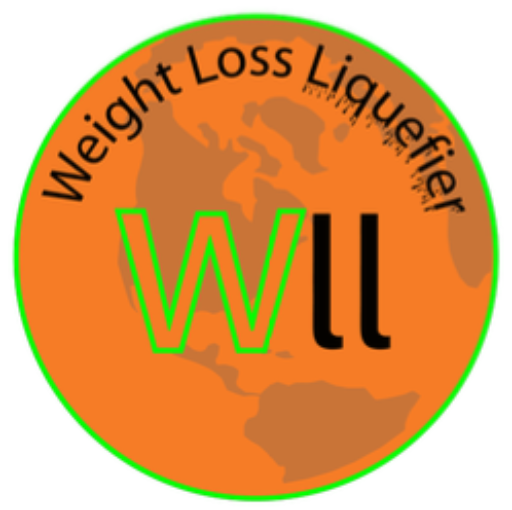9 Best Low-Impact Exercises for Weight Loss: Over 50
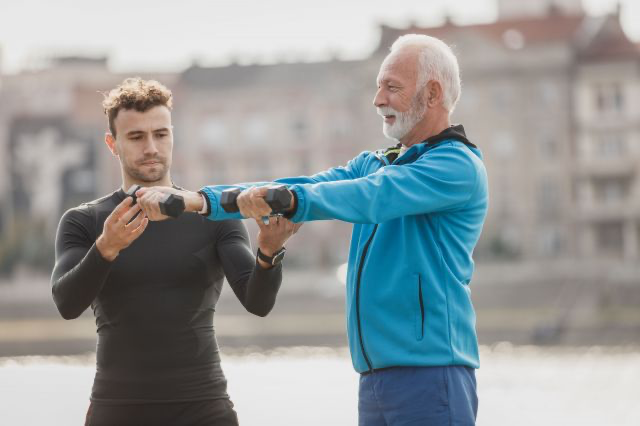
Did you know that low impact exercises for weight loss can burn up to 300 calories per hour? That’s right! You don’t need to jump, run, or put stress on your joints to shed those extra pounds.
Whether you’re dealing with joint issues, just starting your fitness journey, or looking for gentler ways to stay active, these types of exercises are your secret weapon for weight loss.
In this article, we’ll dive into the world of joint-friendly workouts that’ll have you torching calories and feeling great. We will discuss the 9 best low-impact exercises for weight loss: over 50.
Growing older with grace has never been more fun. Let’s get moving!
What Are Low-Impact Exercises?
Simply put, low-impact exercises are designed to be easy on the joints while still providing an effective workout. These exercises are perfect for those of us looking to stay active without high risk of injury.
*Note Not limited to age 50+. Special circumstances for these types of exercises may include post injury or surgery, specific health conditions, and various skill levels.
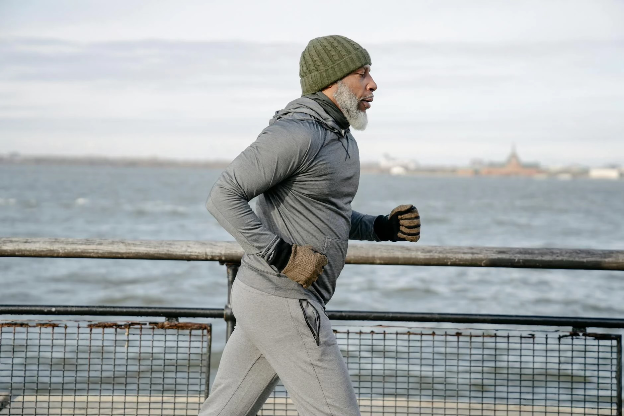
Photo by Barbara Olsen
Benefits for Weight Loss and Overall Health
- Weight Loss: These exercises boost your metabolism, helping you burn calories effectively.
- Joint Health: They reduce the risk of joint injuries, making them ideal for aging bodies.
- Heart Health: They get your heart pumping, improving cardiovascular health.
- Mental Well-being: Gentle exercises can lower stress and improve mood.
Comparison with High-Impact Exercises
- Impact on Joints: High-impact workouts involve quick, vigorous movements (like jumping) and put considerable stress on the joints. Low-impact exercises are more forgiving.
- Intensity: While high-impact routines often burn calories faster, they can lead to quicker fatigue and potential injury. Low-impact sessions may take longer for the same results but are safer for long-term exercise. Take a look at these 5 fat-burning low-impact exercises.
Suitable Candidates for Low-Impact Workouts
- Older Adults: Especially beneficial for those over 50 who still want to stay active.
- People with Joint Issues: Perfect for those suffering from arthritis or past injuries.
- Beginners: Great for those just starting a fitness journey.
- Pregnant Women: Safe and effective during pregnancy.
By focusing on low-impact exercises, you can make fitness an achievable and enjoyable part of your life, regardless of age or physical limitations.
Staying active is fundamental to long-term health.
Include these easy-on-the-joints exercises to feel vibrant and strong well into your golden years. Check out more tips on the effectiveness of low-impact exercises.
1. Swimming: The Ultimate Full-Body Workout
Swimming stands out as one of the best low-impact cardio workouts. It provides an all-around fun exercise by working a wide variety of muscle groups, without putting too much stress on your joints.
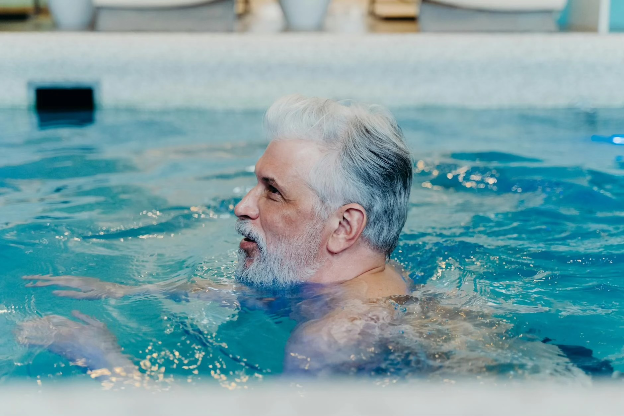
Photo by cottonbro studio
Calorie-Burning Potential of Swimming
One of the primary factors that makes swimming a stellar low-impact workout is the number of calories it burns.
Depending on the intensity and stroke, a 155-pound person can burn between 200-500 calories in just 30 minutes.
This calorie-burning potential makes swimming an excellent choice for weight loss, particularly for people over 50 who are looking for effective low impact workout for weight loss.
Different Strokes and Their Benefits
Swimming isn’t just about moving through water—different strokes offer varied benefits and target different muscle groups: 🏊
- Freestyle: Also known as the front crawl, this stroke is great for overall conditioning and cardio.
- Backstroke: This stroke emphasizes the back muscles and improves posture.
- Breaststroke: Ideal for building muscular endurance and toning the chest.
- Butterfly: Though more challenging, it offers a higher calorie burn and tones the shoulders, chest, and abs.
By mixing up strokes, you will have a balanced workout that conditions your entire body.
How Swimming Supports Weight Loss
Swimming’s resistance effect ensures you’re not just gliding through the water but actively pushing against it, which builds muscle and burns calories.
The muscle gained helps with weight loss by boosting metabolism—muscle burns more calories at rest compared to fat.
Additionally, swimming lowers cortisol levels, which can help in reducing body fat storage over time.
Tips for Beginners Starting a Swimming Routine
- Start with a warm-up: Begin with a few stretches and a light swim to loosen up.
- Focus on form: Proper technique prevents injuries. Consider joining a class to learn the basics.
- Progress gradually: Increase your swim time and intensity as you become more comfortable.
- Cool down: Finish with gentle swimming followed by stretches to ease muscle tension.
Swimming is an excellent workout for older adults seeking an effective low-impact exercise. It supports weight loss, builds muscles, and has a low risk of injuries.
So, the next time you hit the pool, you’re not only having fun but you’re also getting in a great workout. FUN + WORKOUT = HEALTHY LIFESTYLE 😎
2. Walking: Simple Yet Effective
Walking is one of the simplest yet most effective low-impact exercises for weight loss, especially for people over 50. It’s easy on the joints, requires no special equipment, and can be done anywhere.
Walking offers numerous health benefits and can be easily tailored to fit any fitness level.

Photo by Andrea Piacquadio
Walking as a Weight Loss Tool
Walking burns calories, helping you manage your weight. It boosts your metabolism and keeps your heart healthy.
Adding a 30-minute walk to your daily routine is a small change that can lead to big results. Walking is a fantastic way to burn fat and improve your health. So, have fun with walking by sharing a stroll with a friend, your significant other, or your dog.
Techniques to Maximize Calorie Burn While Walking
If you want to burn more calories on your walk, a few simple techniques can make a significant difference:
- Pace Yourself: Walk at a brisk pace. Aim for a speed that gets your heart rate up but still allows you to hold a conversation.
- Use Your Arms: Pumping your arms as you walk can increase your calorie expenditure.
- Longer Steps: Taking longer strides can help engage more muscles.
Incorporating Intervals and Inclines
Adding intervals and inclines to your walking routine is an excellent way to ramp up your workout without adding high impact:
- Intervals: Alternate between brisk walking and a more relaxed pace. For example, walk quickly for two minutes, then slow down for one minute. Repeat this cycle for the duration of your walk.
- Inclines: Walking uphill or on an incline increases resistance and helps engage more muscles. If you’re on a treadmill, adjust the incline setting. If you’re outside, look for hilly pathways.
Best Practices for a Walking Workout Routine
- Consistency is Key: Aim to walk daily, even if it’s just a few minutes. Consistency will help build the habit.
- Stay Hydrated: Bring water along, especially on longer walks.
- Wear Comfortable Shoes: Good walking shoes provide the necessary support and padding. This can prevent common injuries and pains.
- Listen to Your Body: If you feel pain, slow down or stop. It’s essential to listen to what your body is telling you, especially to avoid overtraining.
Walking holds considerable benefits for weight management and overall health. By combining these tips and techniques, you can turn your walking routine into a powerful, low-impact weight loss tool.
For more information, check out these additional 6 low-impact exercises done from your home
3. Cycling: Pedal Your Way to Weight Loss
Cycling is a fantastic way to stay active and fit, especially if you’re over 50, like me.
Not only is it low impact, but it also brings numerous health benefits without putting much strain on your joints. This exercise can help you slim down and keep you healthy.
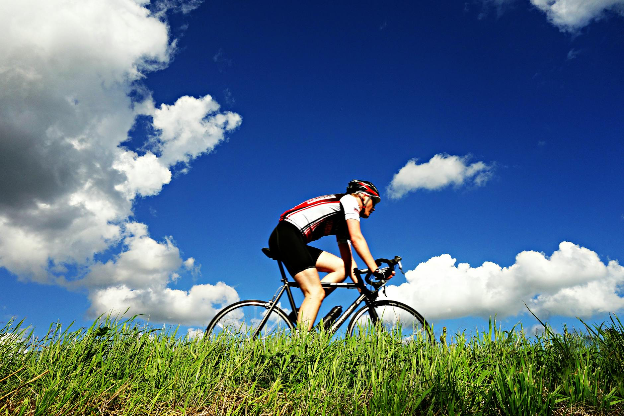
Photo by Mabel Amber
Benefits of Indoor and Outdoor Cycling
Both indoor and outdoor cycling offer amazing health advantages. Here’s why you should consider taking up cycling:
- Low-Impact Exercise: Cycling is gentle on your joints compared to high-impact exercises like running.
- Cardiovascular Health: It strengthens your heart and improves overall cardiovascular fitness.
- Flexibility: You can choose to ride outdoors in nature or stay inside with a stationary bike.
Outdoor cycling connects you with nature, making your exercise more enjoyable. Indoor cycling, on the other hand, allows you to exercise even when the weather isn’t great.
How Cycling Contributes to Weight Loss
Wondering how cycling can help you lose those extra pounds? It’s actually pretty straightforward:
- Burns Calories: Cycling helps you burn a lot of calories without feeling exhausted.
- Builds Muscle: Especially in your legs and lower body, building muscle increases your metabolism.
- Increases Metabolism: As you build muscle and burn calories, your body’s metabolic rate increases, helping you lose weight effectively.
Different cycling formats can also change your workout routine, from steady rides to interval-based training.
Types of Bikes and Cycling Classes
Choosing the right bike is important for a comfortable and enjoyable experience.
- Hybrid Bikes: Perfect for both paved roads and light off-road paths.
- Electric Bikes: These have an electric motor to assist with pedaling, easing the effort required and making it perfect for longer rides.
- Recumbent Bikes: Offers a reclining seat, which reduces strain on the back and joints.
Cycling classes such as spin classes are also available. They provide structured workouts led by experienced instructors to maximize fitness benefits. Personally, I enjoy competing with other riders because it keeps me motivated. Nothing like a good challenge to get you going!
Tips for Beginners and Safety Considerations
Starting something new can be intimidating, but cycling doesn’t have to be. Here are a few tips to get you going:
- Start Slow: Begin with shorter rides and gradually increase the distance.
- Wear Proper Gear: Always wear a helmet and comfortable clothing.
- Stay Hydrated: Don’t forget to drink water before, during, and after your rides.
- Safety First: Follow traffic laws, use bike lanes where available, and make sure your bike is in good working condition.
Cycling is a wonderful and adaptable work towards those aiming to lose weight safely.
For more information on successful cycling tips and benefits for weight loss, check out this guide on cycling for weight loss.
4. Elliptical Training: Smooth and Steady
Elliptical training offers a fantastic way to get into shape, especially for those over 50. It combines the benefits of a vigorous workout while being gentle on the joints.
This exercise machine is a great option for those looking to lose weight with low-impact movements. Let’s explore the advantages, proper techniques, and ways to spice up your elliptical workout.

Photo by Andres Ayrton
Advantages for Weight Loss
Elliptical machines are a powerful ally in your weight loss journey. They help you burn a lot of calories without putting too much strain on your body. Here are some key reasons why they are beneficial:
- Excellent Calorie Burn: Depending on your weight and the intensity, an hour on the elliptical can torch anywhere from 300 to 600 calories.
- Joint-Friendly: Unlike running, the smooth motion helps avoid knee and hip pain while still providing a great workout.
- Works Major Muscle Groups: Ellipticals engage your legs, arms, and core, making it a full-body exercise.
- Boosts Cardiovascular Health: Regularly using an elliptical can improve your heart health by increasing endurance and stamina.
For a deep dive into the advantages, check out these 10 benefits of an elliptical workout.
Proper Form and Technique
Getting the most out of your elliptical workout comes down to using the right form. Here are some tips to keep in mind:
- Keep Your Feet Flat: Always keep your feet flat on the pedals to ensure you are spreading your weight evenly.
- Avoid Leaning Forward: It’s tempting to lean on the handles, but staying upright engages your core and improves balance.
- Grip the Handles Lightly: Use your hands to guide the motion but do not grip too tight; you should be able to feel a workout in your arms without causing strain.
- Monitor Your Speed and Intensity: Start slow and gradually increase your speed and resistance as you become more comfortable.
Here’s an excellent resource if you want additional guidance on proper form and technique for elliptical workouts.
HIIT Workouts on the Elliptical
High-Intensity Interval Training (HIIT) can also be done on the elliptical. It’s a fantastic way to burn more calories in a shorter amount of time. Here’s how you can structure a simple HIIT workout:
- Warm-up for 5 minutes at a low resistance.
- Increase resistance to a challenging yet manageable level.
- Sprint for 1 minute, followed by 2 minutes of a slower pace.
- Repeat this cycle 8-10 times.
- Cool down for another 5 minutes at a comfortable pace.
These short bursts of high intensity followed by rest periods are great for both calorie burn and improving cardiovascular health.
Comparing Elliptical Training to Other Cardio Exercises
When stacking up elliptical training against other cardio exercises, it holds its own very well:
- Elliptical vs. Treadmill: Treadmills may burn a bit more calories, but they are also more taxing on the joints. Hence, ellipticals are better for avoiding injuries.
- Elliptical vs. Cycling: Both are low-impact, but ellipticals engage both the upper and lower body equally.
- Elliptical vs. Rowing: Rowing is also a full-body workout, but fails to provide the same level of cardio benefits for weight loss as elliptical training does.
By understanding these comparisons, you can diversify your workout routine and choose the best exercise for your needs.
For further comparisons with other cardio exercises, read this insightful article by Clean Eatz Kitchen.
This concludes our look into elliptical training. Keep this in mind as you continue exploring the best low-impact cardio workouts tailored for you!
5. Yoga: Mindful Movement for Weight Loss
If you’re looking for low-impact exercises for weight loss, yoga might be just what you need. It’s gentle on your joints yet powerful in its ability to help with weight loss, including physical, mental, and spiritual discipline into your exercise routine.
Yoga doesn’t just burn calories; it transforms your entire approach to health and wellness.
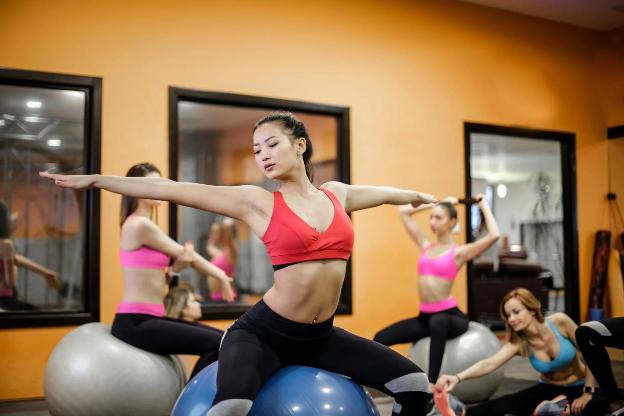
Photo by Andrea Piacquadio.
Calorie-Burning Potential of Different Yoga Styles
Not all yoga styles are the same. Some are mild and meditative, while others get your heart pumping and burn serious calories. For those aiming to lose weight, choosing the right type of yoga is vital. Here’s a quick overview:
- Power Yoga: Known for its rigorous approach, power yoga can burn up to 300 calories per hour. It’s highly effective for weight loss.
- Vinyasa Yoga: This fluid, dynamic form can help you burn between 400 to 600 calories in a session. Learn more about Vinyasa Yoga’s calorie-burning potential.
- Hot Yoga: Practiced in a heated room, this style boosts your metabolism and can help you shed pounds quickly.
How Yoga Supports Weight Loss Beyond Calorie Burn
Yoga’s benefits for weight loss extend beyond just burning calories. It helps in numerous other ways:
- Reducing Stress: Yoga teaches mindfulness and relaxation, helping lower cortisol levels. Lower cortisol means less stress-related weight gain. According to Harvard, yoga reduces stress and manages weight.
- Building Muscle: Certain poses help build lean muscle mass. Stronger muscles boost your metabolism and support long-term weight loss.
- Improving Diet: Yoga practice encourages mindfulness, which can extend to eating habits, helping you make healthier choices.
Best Yoga Poses for Weight Loss
Several yoga poses are particularly effective for weight loss by engaging multiple muscle groups and increasing metabolic rate. Here are few must-try poses:
- Surya Namaskar (Sun Salutation): This sequence warms up your body, improving flexibility and burning calories.
- Warrior Poses: Boost strength and endurance, working on legs, hips, and core.
- Dolphin Plank Pose: This plank variation builds core strength and enhances balance.
Combining Yoga with Other Low-Impact Exercises
For maximizing weight loss, consider combining yoga with other low-impact exercises. Activities like walking, swimming, and Pilates can complement yoga, enhancing overall fitness and weight loss goals.
Combining strength training with yoga can be beneficial. For instance, use yoga as a warm-up before weight lifting. This combination ensures you get the flexibility from yoga and the muscle mass from strength exercises.
Whether you’re new to yoga or have some experience, incorporating it into your workout routine can offer sustainable and rewarding results for weight loss and well-being.
6. Strength Training with Resistance Bands
Strength training with resistance bands is an excellent choice for people over 50.
These stretchy bands come in various levels of resistance, making them perfect for building strength without putting too much strain on your joints.
Whether you’re just starting or have been exercising for years, these bands offer a versatile and effective way to get fit.
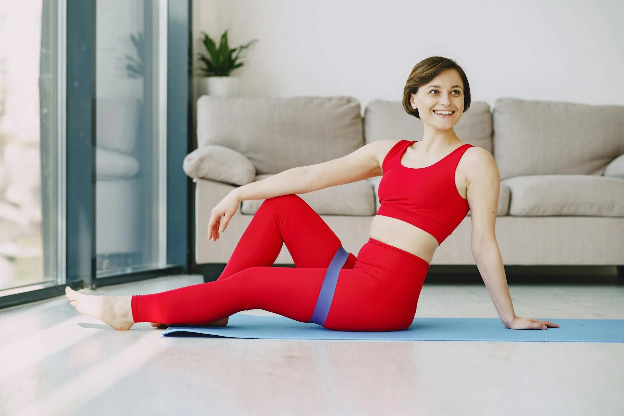
Photo by Gustavo Fring
Benefits of Resistance Training for Weight Loss
Resistance training is highly effective in aiding weight loss, especially for those looking for low impact exercises.
By increasing muscle mass, resistance bands help boost your metabolism, which means you burn more calories even when you’re at rest. This is particularly important for people over 50, as muscle mass tends to decrease with age.
Additional benefits include:
- Improved muscle strength: With stronger muscles, everyday tasks become easier, and you’re less likely to get injured.
- Better balance: Resistance training can enhance your balance and stability, reducing the risk of falls.
- Enhanced mental health: Regular exercise releases endorphins, helping to improve your mood and reduce anxiety.
How to Use Resistance Bands Effectively
Using resistance bands might seem straightforward, but to get the best results, it’s essential to use them correctly. Here are some tips to maximize your workouts:
- Choose the right band: Bands come in different resistances. Start with a lighter band and gradually progress to a heavier one.
- Anchor safely: Make sure the band is securely anchored to prevent it from snapping back at you.
- Maintain form: Keep your movements slow and controlled, focusing on maintaining proper form to engage the right muscles.
- Breathe: Inhale during the easy part of the exercise and exhale when it gets tough.
Full-Body Workout Routine Using Bands
A full-body routine with resistance bands can target everything from your shoulders to your calves. Here is a simple but effective regimen:
- Squats: Stand on the band with feet shoulder-width apart and hold the handles at your shoulders. Squat down and then stand back up.
- Chest Press: Anchor the band behind you, hold the handles, and push them forward as if you’re doing a bench press.
- Standing Rows: Anchor the band at foot level in front of you, grab the handles, and pull them towards your chest.
- Lunges: Stand with one foot forward and the other back, holding the band under your front foot. Perform lunges by bending your knees and lowering your body.
- Bicep Curls: Stand on the band and grab the handles, then curl your hands up to your shoulders.
Progressing with Resistance Band Exercises
As you get stronger, the same resistance might not give you the burn you’re looking for. Here’s how to keep making progress:
- Increase resistance: Move to a band with higher resistance.
- Add reps: Gradually increase the number of repetitions per set.
- Combine exercises: Mix different exercises to challenge multiple muscle groups simultaneously.
- Shorter rests: Reduce the time you rest between sets to keep your heart rate up.
Pursue more ways to progress with resistance band exercises.
Strength training with resistance bands offers numerous benefits for weight loss and overall health, making it an ideal choice for people over 50 looking for effective low-impact exercises.
7. Pilates: Core Strength and Beyond
Pilates is a superb choice for low-impact exercises, especially for people over 50. It’s gentle on the joints and focuses on building core strength, flexibility, and balance.
Let’s explore how Pilates can aid in weight loss and improve overall health.
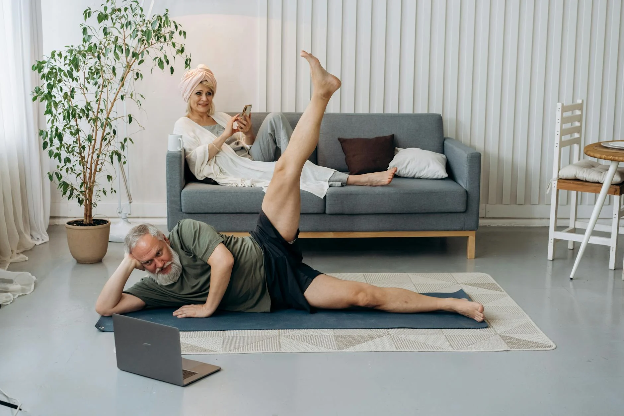
Photo by Mikhail Nilov
Pilates Principles for Weight Loss
Pilates is about more than just physical exercise; it’s a holistic approach to wellness. The primary principles include concentration, control, center, flow, precision, and breathing. These principles help ensure:
- Improved Core Strength: A strong core supports better posture, back health, and stability.
- Better Flexibility: Increased flexibility reduces the risk of injuries and enhances mobility.
- Mindfulness: Incorporating mindful breathing and movements can reduce stress and improve mental health.
Pilates can be especially effective for weight loss when combined with a healthy diet and other forms of exercise.
Mat Pilates vs. Reformer Pilates
There are two main types of Pilates: Mat Pilates and Reformer Pilates. Each has its own benefits and can be adapted for different fitness levels.
- Mat Pilates: These exercises are performed on a mat and often require nothing more than your own body weight. It’s generally more accessible and can be done anywhere.
- Reformer Pilates: Involves a specialized machine that provides resistance through a sliding platform and springs. This method offers more targeted muscle engagement.
According to Shape, Reformer Pilates can provide a higher intensity workout, which may be more beneficial for those serious about weight loss.
Key Pilates Exercises for Burning Calories
Specific Pilates exercises can help you burn calories effectively. Some of the most effective moves include:
- The Hundred: A classic core workout designed to get the blood pumping.
- Crisscross: Engages the oblique muscles, essential for spinal flexibility.
- Leg Circle: Works on stability and engages the lower body muscle groups.
- Plank: Full-body move that strengthens arms, core, and back.
Women’s Health recommends these moves as part of a Pilates routine designed for weight loss.
Incorporating Pilates into a Weight Loss Routine
Adding Pilates to your weight loss routine can be incredibly beneficial. Here’s how to do it:
- Start Slowly: If you’re new to Pilates, begin with beginner-level classes to build a foundation.
- Consistency is Key: Incorporate it into your routine at least 2-3 times a week.
- Pair with Cardio: Complement your Pilates sessions with low-impact cardio activities like walking or swimming for optimal results.
As suggested by Livestrong, combining Pilates with regular cardio workouts and a balanced diet can maximize your weight loss efforts.
Pilates isn’t just a way to lose weight; it’s a practice that enriches your overall quality of life. Its focus on core strength, flexibility, and mindful movement makes it a perfect low-impact exercise for those over 50.
8. Low-Impact Water Aerobics
Low-impact water aerobics is a fantastic exercise option for people over 50 looking to lose weight and stay fit.
This workout takes place in the water, where the gentle resistance makes movements easier on the joints while still providing an effective cardio session. Let’s dive into the many benefits and types of water aerobics.

Benefits of Exercising in Water
Exercising in water offers unique benefits that are especially helpful for older adults. Here are a few reasons why you might want to include water aerobics in your exercise routine:
- Reduced Joint Stress: The buoyancy of water lessens the impact on your joints, making it a safer option for those with arthritis or joint pain.
- Improved Endurance: Water aerobics improves your cardiovascular health and can enhance your endurance thanks to the constant movement and resistance.
- Enhanced Flexibility: The water supports and encourages a greater range of motion, leading to better flexibility.
- Increased Strength: The natural resistance of water helps build muscle strength without the need for weights.
Read more about the benefits of water aerobics for seniors.
Types of Water Aerobics Classes
Water aerobics isn’t one-size-fits-all; there are several different classes to suit various needs and fitness levels. You might find classes like:
- Shallow Water Aerobics: These classes take place in shallow pools and involve standing exercises like jogging, leg lifts, and arm movements.
- Deep Water Aerobics: These classes use flotation devices to keep you suspended in deeper waters, which can intensify the workout.
- Aqua Zumba: This high-energy class combines Zumba dance routines with traditional water aerobics.
- Aqua Yoga: A slower-paced class that focuses on stretching, balance, and breathing techniques, perfect for stress relief and flexibility.
Equipment Used in Water Workouts
Just like traditional workouts, water aerobics can be enhanced with various types of equipment. Here are some popular tools:
- Water Weights: Foam weights that offer resistance when moved through the water.
- Pool Noodles: Long foam tubes used for flotation, balance, and resistance exercises.
- Kickboards: Boards you hold onto while kicking your legs to work on lower body strength.
- Aqua Gloves: Gloves with webbing that increase resistance for upper body exercises.
How Water Resistance Aids in Weight Loss
Water resistance plays a crucial role in making water aerobics an effective workout for weight loss. The resistance of water requires more effort to move, which helps you burn more calories.
Unlike exercising on land, the continuous resistance provided by water challenges your muscles throughout the entire workout. This can lead to better muscle tone and faster weight loss.
Plus, water’s natural cooling effect helps keep you from overheating, which can help you work out for longer periods. As a result, you can burn more calories and increase your metabolism.
For more about how water-based exercises help with weight loss, check out this helpful guide.
9. Rowing: Full-Body Cardio and Strength

Photo by Paolo Lomparte
Rowing is an incredible low-impact exercise that works your entire body and significantly boosts cardiovascular health.
It’s ideal for folks over 50 who want to lose weight safely without putting too much strain on their joints. Let’s dive deeper into why rowing is such an excellent choice.
Calorie-Burning Potential of Rowing
One of the key reasons rowing is an excellent workout for weight loss is its calorie-burning potential. Unlike walking or light jogging, rowing can torch a substantial number of calories.
- High Calorie Burn: A person weighing around 160 pounds can burn around 250-300 calories in just 30 minutes of moderate rowing. Higher intensity rowing burns even more.
Curious about how many calories you can burn while rowing? You can find detailed data on How Much Calories Are Burned On Rowing Machine.
Proper Rowing Technique for Maximum Benefit
To make the most out of rowing, it’s essential to have the correct form. Proper technique not only helps you burn more calories but also prevents injuries.
- Leg Drive First: Start by pushing with your legs. These muscles generate the most power.
- Engage Your Core: As your legs straighten, lean back slightly and engage your core muscles.
- Pull with Your Arms: Finish the movement by pulling the handle towards your chest.
Improve your technique with tips from this Indoor Rowing Technique Guide to maximize your workout benefits.
Indoor vs. Outdoor Rowing
Rowing offers flexibility since you can choose between indoor and outdoor options. Each has its unique benefits.
- Indoor Rowing: Offers convenience and controlled settings, making it easier to track your progress.
- Outdoor Rowing: Provides a more challenging workout because you have to deal with wind and water resistance. Plus, the scenic views are a bonus.
You can explore a detailed comparison in this Indoor vs Outdoor Rowing Discussion.
Incorporating Rowing into a Weight Loss Plan
Rowing should be part of a holistic approach to weight loss that includes a proper diet and additional low-impact exercises.
- Consistency is Key: Aim to row at least three times a week.
- Mix it Up: Combine steady-state sessions with high-intensity intervals to keep things interesting and effective.
- Pair with Nutrition: A balanced diet helps you maximize the results of your rowing workouts.
Discover more about pairing rowing with a weight loss plan from this comprehensive guide.
Conclusion
The 9 best low-impact cardio workouts can help you lose weight and stay healthy over 50. Whether you’re swimming, rowing, or walking, pick activities you enjoy and stick with them.
Your joints will appreciate the care, and persistent effort will tackle stubborn pounds. Now is the time to start.
Embrace these low-impact exercises for weight loss and witness your transformation. A lighter, healthier you is within reach, at any age.
